The church is neo-classical in style. The plan of the church is that of the Latin Cross, with nave and transepts. The church is 193 feet in length and 98 feet across at its widest point. It has a seating capacity for 1000 people.
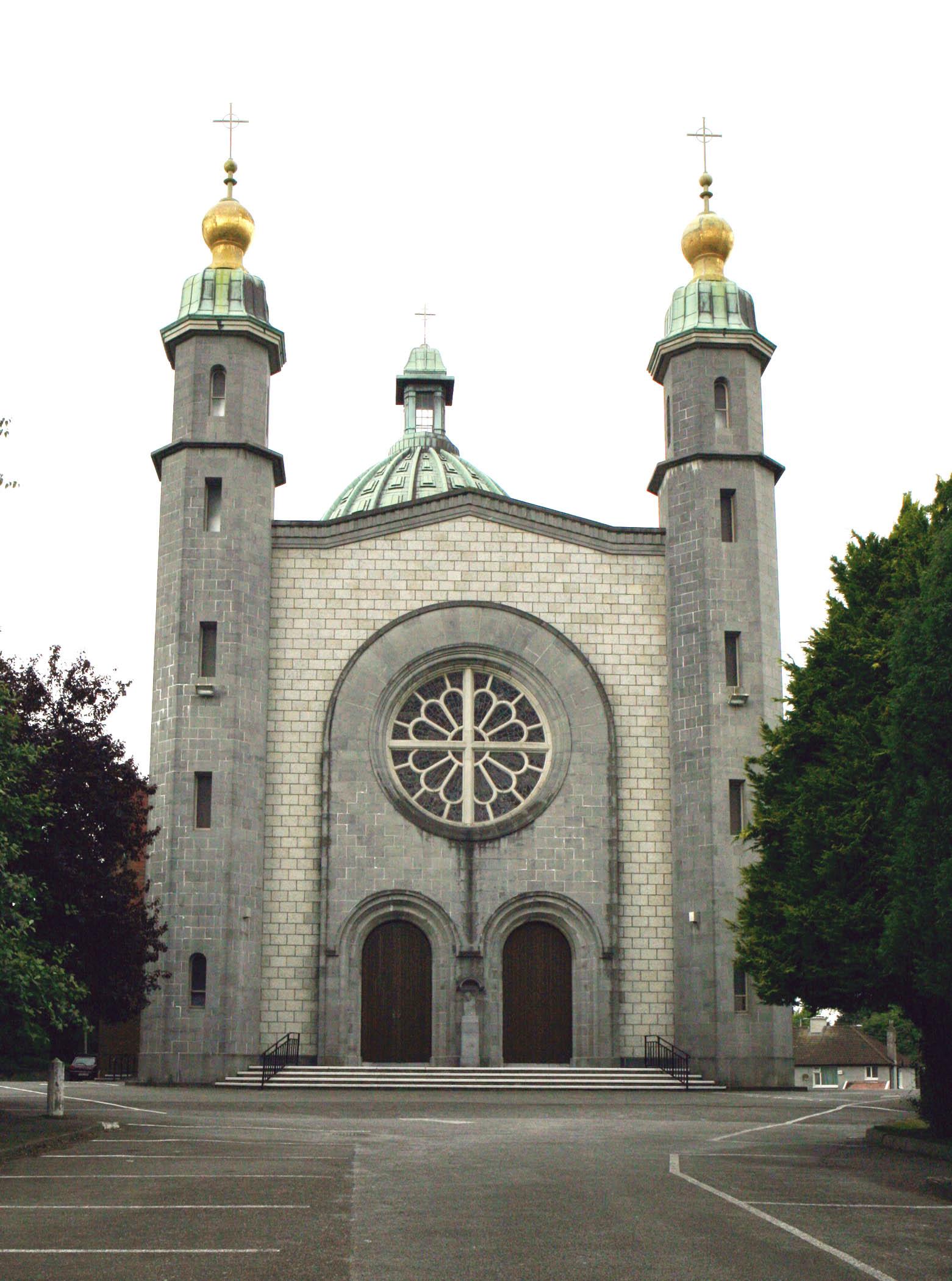
Facade of front of Church

Sculpture of Madonna and Child by Seamus Murphy, located between the front doors
The building is dominated by a large dome in the classical style, located over the meeting point of sanctuary, nave and transepts. The height of the dome from floor to apex internally is 110 feet. The brick drum supporting the dome is almost 30 feet in height and has 20 windows which greatly strengthen the natural light in the church. A large bronze lantern stands on top of the dome and is topped by a cross, rising to a height of 24 feet above the dome. The dome and roof are covered in copper sheet.
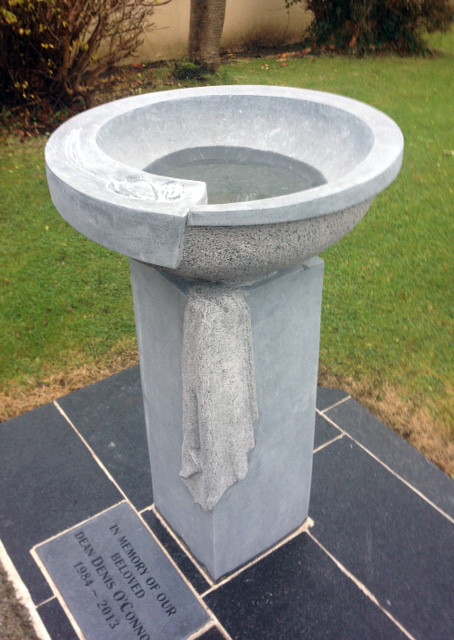
Memorial to Dean Denis O’Connor
The main entrance faces Wilton Road where there is an imposing facade with two semi-circular headed doors. Over these, there is a large rose window, flanked on either side by octagonal towers, topped with a cupola, bronze sphere and gilded cross. Between the two front doors externally, there is a beautiful sculpted Madonna and Child by the renowned Cork Sculptor, Séamus Murphy. The general facing material of the church is brick of varied colour, with white limestone covering the main façade.
Memorial to Dean Denis O’Connor
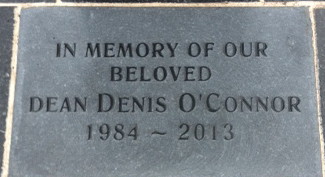 In March 2013, our beloved Dean Denis O’Connor was called to his eternal reward. The Parish Liturgy Group thought we should remember him with a sculpture demonstrating how he lived his priestly vocation. He served his people with love and humility and every Holy Thursday he washed the feet of his parishioners.
In March 2013, our beloved Dean Denis O’Connor was called to his eternal reward. The Parish Liturgy Group thought we should remember him with a sculpture demonstrating how he lived his priestly vocation. He served his people with love and humility and every Holy Thursday he washed the feet of his parishioners.
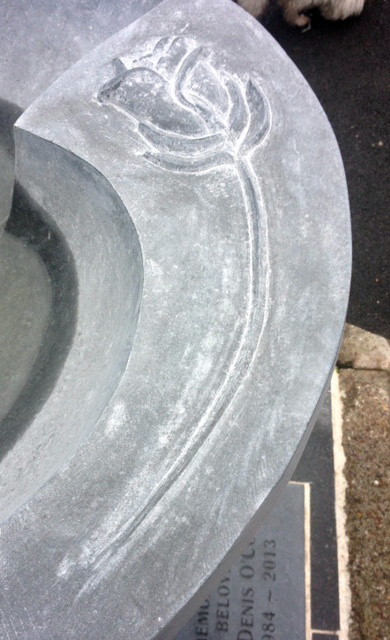
Rose
Having prayed to the Holy Spirit, we started fund raising. We met with Mike Wilkins of the Cork Sculpture Factory with our ideas of a basin, a towel, the Holy Spirit and a rose, his favourite flower. What Mike Wilkins sculpted was indeed inspired and was a fitting tribute to a beautiful person, who so loved all he served. It was completed and blessed in March 2014 on his first anniversary.
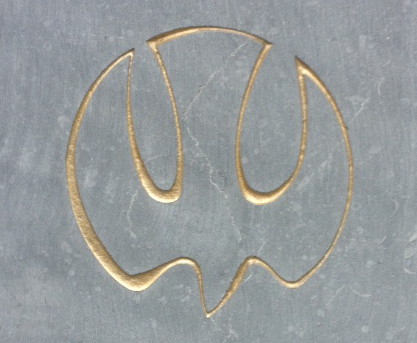
Holy Spirit
Altar
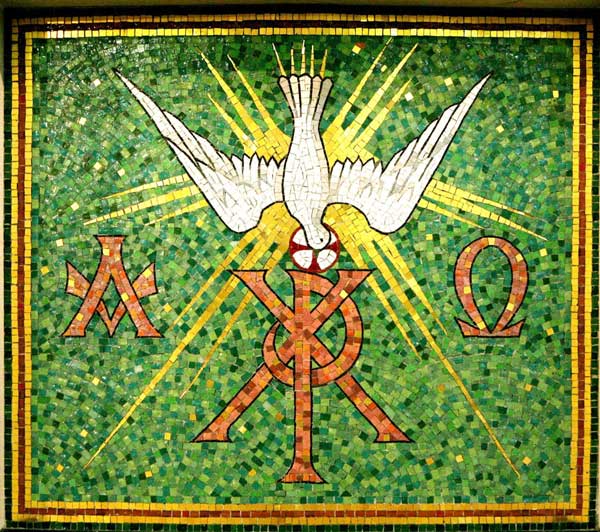
Mosaic on High Altar
The sanctuary area is semi-circular in shape and is raised 4 feet above the nave. The original altar, incorporating the tabernacle, stands imposingly at the rear of the sanctuary. On the front of this altar, there is a colourful mosaic. In the centre of this is a Dove descending, a depiction of the Holy Spirit who guides the Church and each one of us. Underneath this there is the symbol known as the Chi-Rho sign formed by superimposing the first two letters of the name Christ In Greek letters (XP) = {CHRist} to indicate the centrality of Christ to our faith and to the Mass.
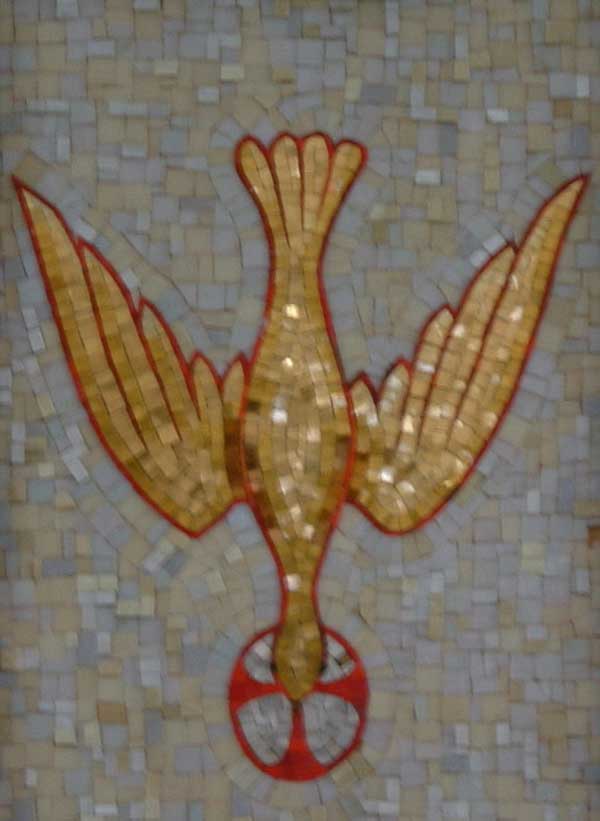
Mosaic of Dove on Ambo
On both sides of this mosaic are two Greek letters, Alpha (A α) and Omega (O Ω), the first and last letters of the Greek alphabet, signifying the Beginning and the End. This symbol was suggested by their use in the Book of Revelation, the last book of the New Testament. “I am the Alpha and the Omega, says the Lord God, he who is and who was and who is to come, the Almighty” Book of Revelation 1:8
This symbol refers both to Christ and the Father. John the apostle wants to convey the message that humanly speaking the Christian Church could not survive on its own but God is the one in whom we can place our trust both now and in the future.
A new altar facing the people and an ambo has been installed to provide for the celebration of the new liturgy. The surrounding wall is covered with white-grained marble.
Ceiling
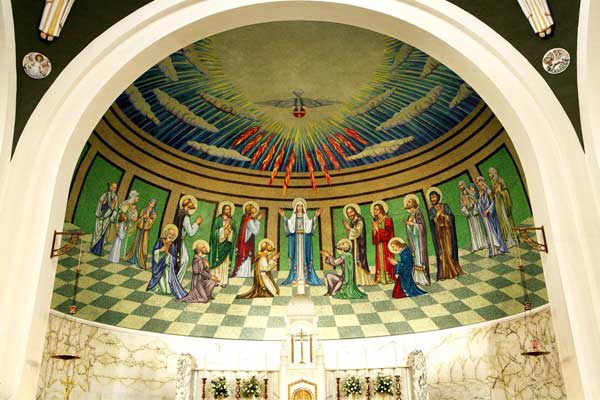
Sanctuary showing the Holy Spirit descending
The ceiling of the sanctuary is a half-dome. The coming of the Holy Spirit on Our Lady, on the apostles and disciples at Pentecost is the theme of the colourful mosaic covering the ceiling. The dove, symbol of the Holy Spirit, is shown sending out tongues of fire which radiate from the apex of the curve. The mosaic was designed and executed by the Italian artist Romeo Battistella who was attached to International Mosaics of Roscommon. It is a beautiful scene imbued with vitality and peace.
Turkwel Cross
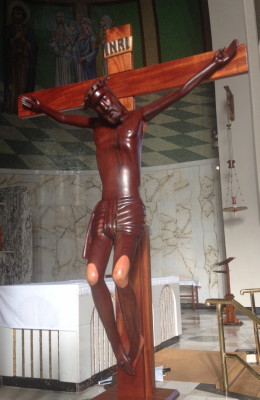
Carved rosewood crucifix from Kenya
October 19th, Mission Sunday, 2014 a new carved cross commissioned from Kenya was installed. It is truly a work of art of the highest order and can be clearly seen from any point in the Church. The objective was to focus in the congregation’s mind our link with our sister Parish of Turkwel

Dome with the Four Evangelists on the Pillars
The imposing dome stands on four columns at the meeting point of nave and transepts. Figures of the four evangelists are mounted at the top of these columns. They are called the evangelist, a word meaning people who proclaim good news. The position and prominence in the church of the figures symbolising the four Evangelists is meant to convey the centrality and importance of the Gospels for us the followers of Christ. The symbols of the four evangelists are based on the Book of Ezekiel 1:1-14 and the Book of Revelation 4:7 where the four living creatures that surround God’s throne are described.
The symbols of the four animals have captured the imagination of artists down through the ages. They are found in the Book of Kells.
A winged man or angel represents Matthew, the author of the first Gospel. It points to the emphasis in Matthew on the Incarnation of Jesus, Son of God, becoming a human being like us.
Mark, the author of the second Gospel is symbolised by a winged lion, a figure of power and courage. It points to Christ our King.
Luke, the author of the third Gospel (and the Acts of the Apostles) is symbolised by a winged bull, a figure of sacrifice, highlighting the priestly ministry of Christ.
John the Evangelist, is symbolised by the eagle. It points to Jesus’ divine nature and his Ascension. The goal of our journey is to live in God’s presence.
Medallions of the Evangelists on the Pillars


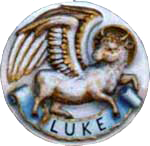


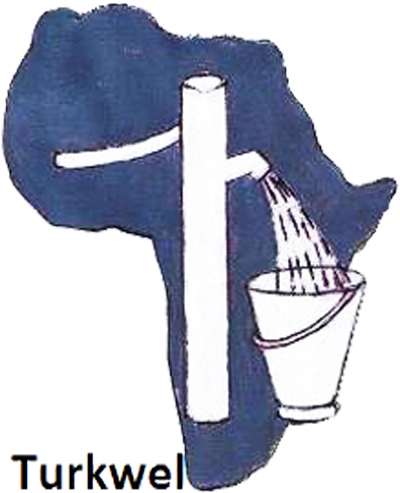
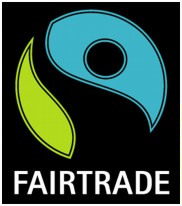
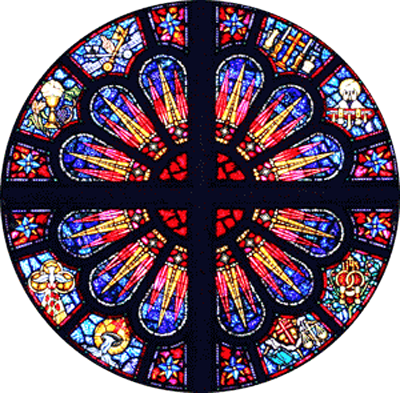
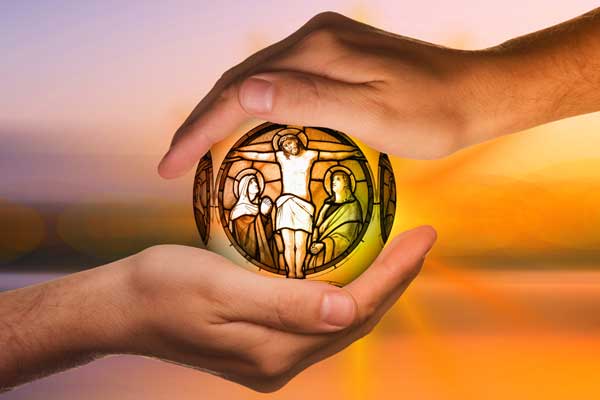

![School Crest [© Coláiste an Spioraid Naoimh 2013]](https://www.dennehyscrossparish.ie/wp-content/uploads/2018/09/crestcsn-1.jpg)
![School Crest Mount Mercy College [© Mount Mercy College 2013]](https://www.dennehyscrossparish.ie/wp-content/uploads/2018/09/mmc2.jpg)
![School Crest [© St Catherine’s School 2013]](https://www.dennehyscrossparish.ie/wp-content/uploads/2018/09/scscrest2.png)